What Music Did People Listen to from the 1910s to the 1980s?
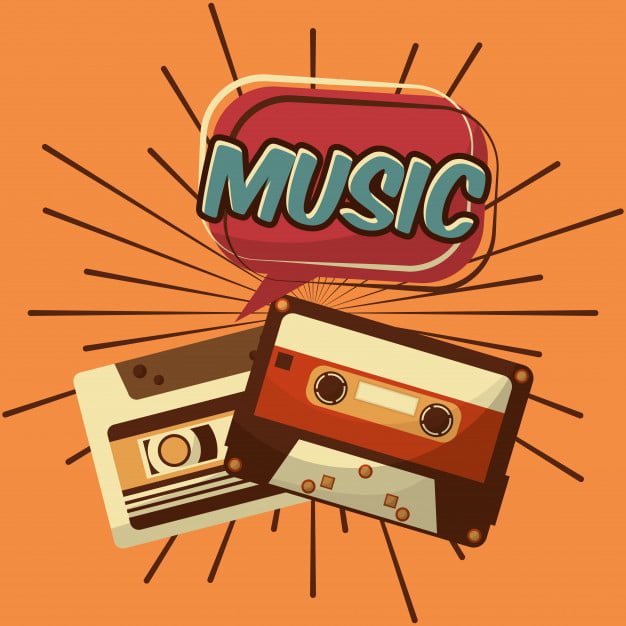
Music in the 1910s – popular anti-war songs
What type of music was popular in the 1910s?
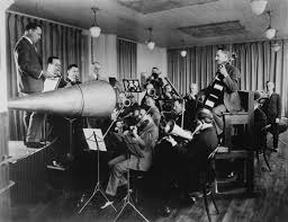 Due to the wartime background of the 1910s, the technology to help produce music didn’t develop much. However, the music was the most pervasive in the war. Thus the commercial music industry grasped this chance and produced songs for a mass audience. It was not difficult to find that there were popular antiwar songs, like “I Didn’t Raise My Boy to Be a Soldier”. Some songs were created to booster morale, like George M. Cohan’s “Over There.” And the song “Keep the Home Fires Burning” was dealt with separation and loss.
Due to the wartime background of the 1910s, the technology to help produce music didn’t develop much. However, the music was the most pervasive in the war. Thus the commercial music industry grasped this chance and produced songs for a mass audience. It was not difficult to find that there were popular antiwar songs, like “I Didn’t Raise My Boy to Be a Soldier”. Some songs were created to booster morale, like George M. Cohan’s “Over There.” And the song “Keep the Home Fires Burning” was dealt with separation and loss.
The musical growth in World War I
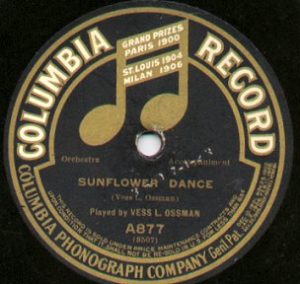 During the 1910s, people used the acoustical recording form to record sounds. Singers and musicians sang around a cone. And the cone picked up the sound to direct a needle to put grooves in a disc. Finally, the music recorded in the disc could replay. The first jazz recordings occurred in 1917. This kind of way was not efficient when it concerned with a volume adjustment or an instrumental.
During the 1910s, people used the acoustical recording form to record sounds. Singers and musicians sang around a cone. And the cone picked up the sound to direct a needle to put grooves in a disc. Finally, the music recorded in the disc could replay. The first jazz recordings occurred in 1917. This kind of way was not efficient when it concerned with a volume adjustment or an instrumental.
On the other hand, most music in the 1910s was performed live in vaudeville. Because of the big theaters, musicians had to create loud music in order to make the sound throughout the whole theaters. These situations finally changed until the 1920s thanks to the invention of the microphone.
Musicians of the 1910s
C. Handy
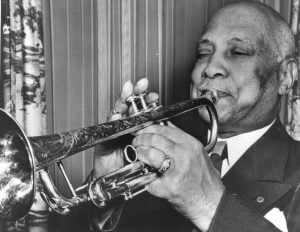
- Global music figure
- Bringing the blues to Tin Pan Alley
- Composing the first commercial blues to be published
- One of America’s favorite songs “St. Louis Blues” by W.C. Handy
The Original Dixieland Jazz Band
- One of the first jazz bands to be recorded in 1917 invited by the New York night club
James Reese Europe
- The most respectable band leader of an African American band.
- Serving in the 369th Infantry in World War I & creating music inspired by the war experience
- “Hell Fighters Band”, Europe’s band’s nickname
Music from the 20s – Jazz age
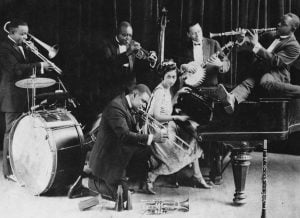 The 1920s was called the “Jazz Age”. The spirit of liberation was reflected in the jazz’s fast beat, earthy rhythms, and improvisational style. The modern consumer economy and mass entertainment developed. The American 1920s music reflected that cultural division.
The 1920s was called the “Jazz Age”. The spirit of liberation was reflected in the jazz’s fast beat, earthy rhythms, and improvisational style. The modern consumer economy and mass entertainment developed. The American 1920s music reflected that cultural division.
The development of music in the 1920s
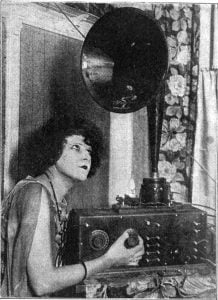 During the 1920s, inventors created 2 new appliances: the radio and the phonograph. They changed the way that the music sounded and the way that people listened to music. As a result, popular music was more accessible to the common household home than before. Moreover, the improvements of the microphone made it possible to record music electrically. Speakers used the technique of “crooning” to whisper to each individual person. Besides, the popularity of jazz, blues, swing music, and the “hillbilly” music also led to the phonograph boom.
During the 1920s, inventors created 2 new appliances: the radio and the phonograph. They changed the way that the music sounded and the way that people listened to music. As a result, popular music was more accessible to the common household home than before. Moreover, the improvements of the microphone made it possible to record music electrically. Speakers used the technique of “crooning” to whisper to each individual person. Besides, the popularity of jazz, blues, swing music, and the “hillbilly” music also led to the phonograph boom.
Popular Dance Bands of the 20s
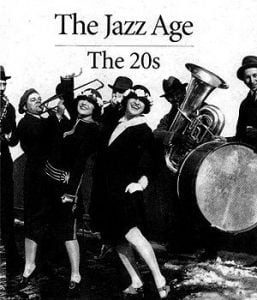 The 1920s developed a popular culture of dancing when people were on the way to liberate themselves. There existed some most popular dances of the time. For example, the “Charleston,” the “Black Bottom,” the “Shimmy,” the “Foxtrot,” and the “Lindy Hop”. Thus the dance bands were also familiar to people. The Paul Whiteman, Ben Bernie and etc. The fashion of this decade definitely was influenced by the popularity of dance music. For instance, people created Flapper dresses for women which were perfect for flamboyant dancing.
The 1920s developed a popular culture of dancing when people were on the way to liberate themselves. There existed some most popular dances of the time. For example, the “Charleston,” the “Black Bottom,” the “Shimmy,” the “Foxtrot,” and the “Lindy Hop”. Thus the dance bands were also familiar to people. The Paul Whiteman, Ben Bernie and etc. The fashion of this decade definitely was influenced by the popularity of dance music. For instance, people created Flapper dresses for women which were perfect for flamboyant dancing.
1920s Jazz
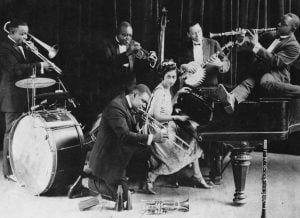 The decade of the 1920s was Jazz’s golden age. Jazz music originated in New Orleans, changed its style in the 1920s. It developed into the top culture from low culture. Apparently, Jazz entered the mainstream in the decade. There were many popular Jazz Musicians like Louis Armstrong, Duke Ellington, and Benny Goodman, etc.
The decade of the 1920s was Jazz’s golden age. Jazz music originated in New Orleans, changed its style in the 1920s. It developed into the top culture from low culture. Apparently, Jazz entered the mainstream in the decade. There were many popular Jazz Musicians like Louis Armstrong, Duke Ellington, and Benny Goodman, etc.
1920s blues
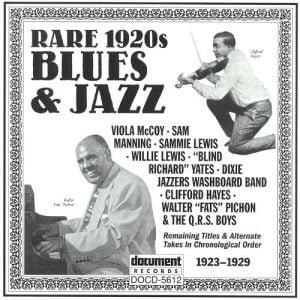 With regard to the 1920s blues, it had to be said a black singer first, whose name was Mamie Smith. She released a recording “Crazy Blues.” Then the blues hit the decade. Another two is Ma Rainey and Bessie Smith. Their recordings “Mother of the blues”, “Empress of the blues” brought the blues to more audiences.
With regard to the 1920s blues, it had to be said a black singer first, whose name was Mamie Smith. She released a recording “Crazy Blues.” Then the blues hit the decade. Another two is Ma Rainey and Bessie Smith. Their recordings “Mother of the blues”, “Empress of the blues” brought the blues to more audiences.
1920s Broadway
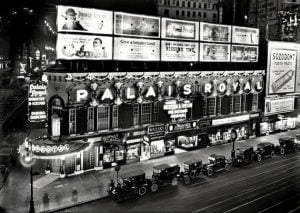 Thanks to the creations of talking films, musicians in the 1920s worked to create musical films on Broadway. Broadway music in the 1920s was heavily influenced by Jazz. Popular Broadway performers began making their way to the film and music recording industries. Famous stars to emerge from the Broadway scene included Fanny Brice, Al Jolson, Sophie Tucker, and Ethel Waters.
Thanks to the creations of talking films, musicians in the 1920s worked to create musical films on Broadway. Broadway music in the 1920s was heavily influenced by Jazz. Popular Broadway performers began making their way to the film and music recording industries. Famous stars to emerge from the Broadway scene included Fanny Brice, Al Jolson, Sophie Tucker, and Ethel Waters.
Music from the 30s – swing music during the great depression
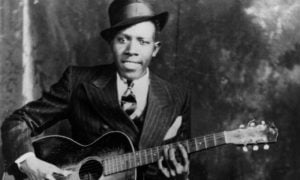 The decade of the 1930s is a hard time for people. But it did not stop people to love music. Music is a helpful tool to capture the mood of a particular historical era. In the Great Depression of the United States, the favorite songs must contain “Brother, Can You Spare A Dime?” and Roosevelt’s theme song “Happy Days Are Here Again.” It cannot be denied that the Jazz and swing music played by big bands were still welcome.
The decade of the 1930s is a hard time for people. But it did not stop people to love music. Music is a helpful tool to capture the mood of a particular historical era. In the Great Depression of the United States, the favorite songs must contain “Brother, Can You Spare A Dime?” and Roosevelt’s theme song “Happy Days Are Here Again.” It cannot be denied that the Jazz and swing music played by big bands were still welcome.
The 1930s shared musical culture
Thanks to the development of science and technology, a shared musical culture was created. The nationwide radio and car radios allowed music outside to the home. On the other hand, Hollywood soundtracks also popularize songs.
The background of this decade might be a reason why American music was extraordinarily diverse during the 1930s. There were folk, protest songs, Broadway show tunes.
The 1930s most popular music – swing music
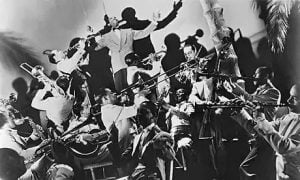 Some big bands liked to play a flowing style of Jazz, called swing music. Swing music was the most popular music during this decade. The Lindy Hop, the Susy Q and etc. You can still feel the swing music in many movies, in classic music, for example, the works of Copland and Willian Grant Still.
Some big bands liked to play a flowing style of Jazz, called swing music. Swing music was the most popular music during this decade. The Lindy Hop, the Susy Q and etc. You can still feel the swing music in many movies, in classic music, for example, the works of Copland and Willian Grant Still.
Music in the 40s – big bands of swing and jazz
During the war years 0f the 1940s, except the morale-building songs, deeply sentimental songs became the most popular songs. For instance, “White Christmas” by Berlin, and “Sentimental Journey” by Bud Green, Ben Homer, and Les Brown. Americans used romantic ballads like “I Don’t Want to Walk Without You” to express their separation and loss.
1940s FM Radio
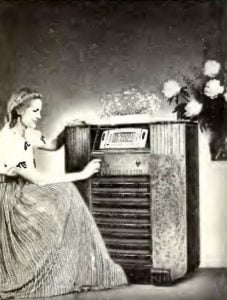 A new way of broadcasting music came out and also interrupted in wartime. In 1941, people created FM radio. But because of the outbreak of World War II, it was interrupted. And until the 1950s, the FM radio once again spread.
A new way of broadcasting music came out and also interrupted in wartime. In 1941, people created FM radio. But because of the outbreak of World War II, it was interrupted. And until the 1950s, the FM radio once again spread.
Gold Record as a new award for musicians in the 1940s
The new award “Golden Record” was given to the musicians who reach the top of the music charts. Glenn Miller was the first person to ever receive a Gold Record for his million-selling hit, “Chattanooga Choo Choo.”
1940s Musicians
Dizzy Gillespie
- A South Carolina native who excelled at playing the trumpet
- Playing with prominent swing bands, including Benny Carter and Charlie Barnet
- Creating a new sound, “bebop”
- One of the most influential jazz and bebop musicians of the 1940s
Artie Shaw
A jazz bandleader and an excellent clarinetist during the 1940s
- The “King of Clarinets”, producing hits that kept a rival alive between Shaw and Benny Goodman
- Expressing his dislike of his fans by calling them “morons”
- Focusing on being innovative and creating new music rather than pleasing his fans
Frank Sinatra
 Beginning his career in big bands at an early age
Beginning his career in big bands at an early age- Moving into his solo career in the 1940s leading on into the ’50s
- winning favor with the women
- Rising quickly to the top of the charts
- Sinatra a successful musician
- Winner of several grammy’s for his acting performances
Music from the 50s – rock n’ roll
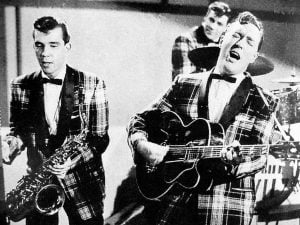 During the 1950s, the United States became the superpower in the world. This decade also created a new style of music: Rock n’ Roll. The music hits of the 50s became the soundtrack of the lives of those between twelve and twenty-one.
During the 1950s, the United States became the superpower in the world. This decade also created a new style of music: Rock n’ Roll. The music hits of the 50s became the soundtrack of the lives of those between twelve and twenty-one.
Rock n’ Roll in the 50s
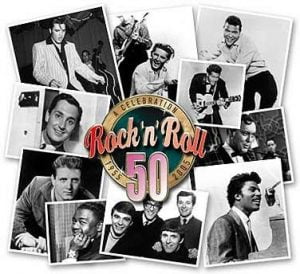 Rock n’ Roll was a new style and sound of music in the 1950s. This kind of music inspired people to have a free spirit. Moreover, Rock n’ Roll also led to the creation of hippie popular in the 1970s.
Rock n’ Roll was a new style and sound of music in the 1950s. This kind of music inspired people to have a free spirit. Moreover, Rock n’ Roll also led to the creation of hippie popular in the 1970s.
Musically, rock ‘n’ roll was marked by guitar-based instrumentation, blues-based composition, electronic amplification, high volume, and dance-ability. Jazz depends on a brass instrument, while rock ‘n’ roll emphasized the electric guitar and drums. Many songs, like “Teenager in Love,” had the word teen in their title.
What made this new music possible was the migration of southerners, black and white, to southern and northern cities during and after the war. The movement brought together different musical traditions and created a new sound in the nasties of the R&B and country-western.
1950s musicians
Rosemary Clooney
 A popular singer and actress throughout the 1950s
A popular singer and actress throughout the 1950s- Clooney sang and toured with bands in the 1940s
- A solo singing of Columbia Studios
- Starred in the movie White Christmas (1954)
- Starred on her own TV show
Chuck Berry
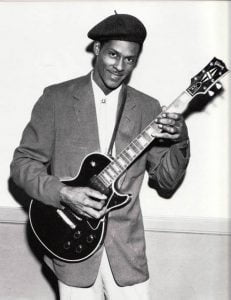
- One of the most influential performers of the 1950s
- Helping with the growth and evolution of rhythm-and-blues and Rock n’Roll
- Coming out with songs “Johnny B. Goode” and “My Ding-a-Ling”
- Known for his distinctive sound and clever lyrics
- Influential role in the development of rock n’ roll
Cordell Jackson
 Known for being the first woman to write, produce, and sing her own music
Known for being the first woman to write, produce, and sing her own music- Founding her own Moon Records in 1956
- Wrote and released music such as “Beboppers Christmas” and “Rock and Roll Christmas”
Elvis Presley
 Rock n’Roll’s first real superstar in the 1950’s, Known as “The King”
Rock n’Roll’s first real superstar in the 1950’s, Known as “The King”- Developing a revolutionary new sound by combining blues, country, and gospel music
Music from the 60s – hard rock
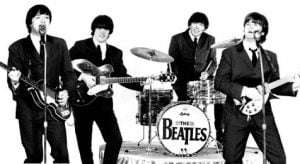 The 1960s was a time of great upheaval in society, fashion, attitudes, and especially music. Technological innovations made it easy for teenagers to build their own music collections. Television helped transform teen culture into a national culture. Television’s most popular dance show brought 50s fashions in dance and dress to millions of teenagers. Rock n’ Rolls remained the distinctive form of youthful musical expression.
The 1960s was a time of great upheaval in society, fashion, attitudes, and especially music. Technological innovations made it easy for teenagers to build their own music collections. Television helped transform teen culture into a national culture. Television’s most popular dance show brought 50s fashions in dance and dress to millions of teenagers. Rock n’ Rolls remained the distinctive form of youthful musical expression.
Before1963, the music still reflected the sound, style, and beliefs of the past decade. Many hit records were produced by artists who had achieved mainstream success in the 1950s, such as Elvis, Ray Charles, Dion, and the Avery brothers. In 1963 and later years, a series of social influences changed the concept of popular music and produced the musical diversity we experience today. Influenced by the assassination of President Kennedy, the escalation of the Vietnam War, and the advance of the civil rights movement, music began to reflect this change. The “British Invasion” by the Beatles appeared on the music scene. The fanatical fans forever changed the way people viewed music and interacted with musicians.
1960s cassette tapes
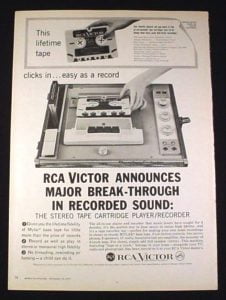 In the 1960s, cassette tapes were more readily available to the public. They are cheaper than vinyl and more portable. Tapes cost about $3, and vinyl about $6. These tapes can play music for up to 30 minutes. During the decade, they became more sophisticated, making record companies fearful of increasing competition.
In the 1960s, cassette tapes were more readily available to the public. They are cheaper than vinyl and more portable. Tapes cost about $3, and vinyl about $6. These tapes can play music for up to 30 minutes. During the decade, they became more sophisticated, making record companies fearful of increasing competition.
Music hits of the 6os
 British Invasion
British Invasion- Motown/R&B
- Surf Rock and Psychedelic Rock
- Roots Rock and Hard Rock
- Folk Rock and Protest Music
- Acappella
Music of the 70s – disco music
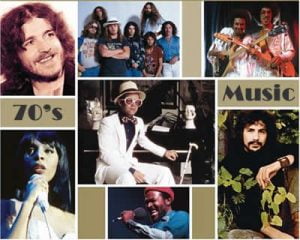 As the 1970s began, there were more and more musical genres, from disco to folk and country music. Experimental music became popular along with electronic sounds, including synthesizers and harmonies. In this electronic age, cassettes have gained more followers, and the music industry’s sales have declined as teenagers have begun to copy music from home recordings. The Walkman was introduced in 1979, improving the sound quality of cassette tapes.
As the 1970s began, there were more and more musical genres, from disco to folk and country music. Experimental music became popular along with electronic sounds, including synthesizers and harmonies. In this electronic age, cassettes have gained more followers, and the music industry’s sales have declined as teenagers have begun to copy music from home recordings. The Walkman was introduced in 1979, improving the sound quality of cassette tapes.
Disco music of the 70s
If there was a musical style that defined the decade, disco was the 1970s. Despite its relatively short popularity, there are still a lot of songs and artists in this genre popular today. Disco music of the 70s also had a big influence on 1970s fashion. Van McCoy’s “The Hustle” is often considered a disco definitive song, and many say it was The first of its kind. Gloria Gaynor also loved disco-pop for her song “I Will Survive.” The Bee Gees’ hit single “Jive Talkin'” also helped define the disco genre, and their blockbuster “Stayin’ Alive” is often synonymous with the disco era. The “YMCA” and “manhood” of the village people also helped increase the popularity of the musical style. The style was so popular that respected artists such as Rod Stewart and Diana Ross joined the trend, adding disco elements to their new music or creating their own disco albums. Unfortunately, it didn’t take long for the public to see the stupidity and commercialization of the disco. Young people have also rebelled against the style, and it is common to see some fans wearing “disco sucks” T-shirts.
Rock bands of the 70s
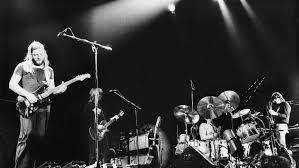 Progressive rock was very popular in the 1970s. This type of music is typically characterized by the combination of rock music with another type of music, such as classical music or opera, to form a mixed type of music. Pink Floyd are known for their concept albums and are considered one of the best bands in the genre. Other popular progressive rock bands of the 70s include Rush, Queen, Grand Funk Railroad, Kansas, and Electric Light Orchestra.
Progressive rock was very popular in the 1970s. This type of music is typically characterized by the combination of rock music with another type of music, such as classical music or opera, to form a mixed type of music. Pink Floyd are known for their concept albums and are considered one of the best bands in the genre. Other popular progressive rock bands of the 70s include Rush, Queen, Grand Funk Railroad, Kansas, and Electric Light Orchestra.
1970s Punk
In the mid-1970s, there was an explosion of musical styles that emphasized radical, anti-orthodox tones. Punk is a raucous, anarchic heavy metal music form. It was originated in lower Manhattan and in Britain’s declining urban neighborhoods.
1970s hip-hop culture – Rap
Rap is an aspect of hip-hop culture. In rap, rhyming lyrics are recited against a musical background, including scratching, remixing, and sampling from other songs. It has emerged in the economically depressed South Bronx.
Other aspects of hip-hop culture include break dancing and graffiti art. Particularly controversial is gangland rap. It has come under heavy criticism for its overt misogyny, violent tendencies, and macho swagger. In addition, gangster rap has the largest and most enthusiastic audience among white suburban teens. Because those teens found a little outlet for their rebellious energy in their own lives.
Other popular forms of musical expression included grunge, rasta, reggae, Salsa, and Tejano.
1980 music – pop music
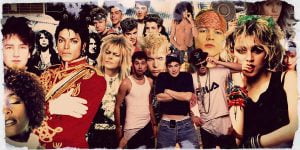 In the 1980s, music videos were combined with artists’ songs. The music video was available on MTV, one of the most popular entertainment channels at the time. The idea of mixing video with music was a huge success, making many albums the best-selling records of all time. There were new genres of music emerging, including hip-hop, New Wave, and Hair Metal. The electronic sound lasted for some time, however, as pop music began to dominate the music, disco began to lose its popularity.
In the 1980s, music videos were combined with artists’ songs. The music video was available on MTV, one of the most popular entertainment channels at the time. The idea of mixing video with music was a huge success, making many albums the best-selling records of all time. There were new genres of music emerging, including hip-hop, New Wave, and Hair Metal. The electronic sound lasted for some time, however, as pop music began to dominate the music, disco began to lose its popularity.
80s Musicians
Michael Jackson
- The “King of Pop”
- Releasing his album Thriller in 1982, changing the way pop music sounded
- Mixing funk music with pop music to create a new sound
Prince Rogers Nelson
 Known for being a music producer, songwriter, and singer in the 1980s.
Known for being a music producer, songwriter, and singer in the 1980s.- Albums including Prince (1979), Dirty Mind (1980), and Controversy (1981)
- International fame when he released the album 1999 in 1982 and Purple Rain in 1984
- The Grammy Awards
Aerosmith
 Band members: Steven Tyler, Tom Hamilton, Joey Kramer, Joe Perry, and Brad Whitford.
Band members: Steven Tyler, Tom Hamilton, Joey Kramer, Joe Perry, and Brad Whitford.- “the biggest comeback in music history” by releasing the album Permanent Vacation (1984)
Whitney Houston
 A singer and an actress
A singer and an actress- A pop star in the 1980s
- Grammy Awards for herhit song “Saving All My Love for You”
- An acting career in the 1990s by co-starring in The Bodyguard (1992) with Kevin Costner

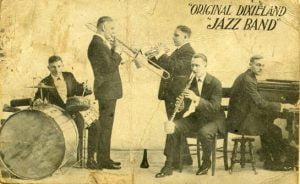
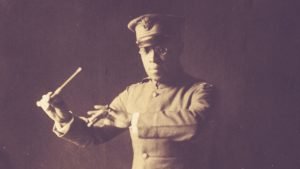
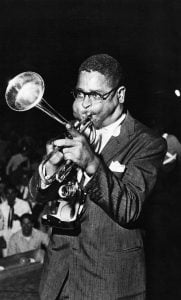
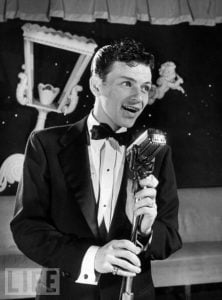 Beginning his career in big bands at an early age
Beginning his career in big bands at an early age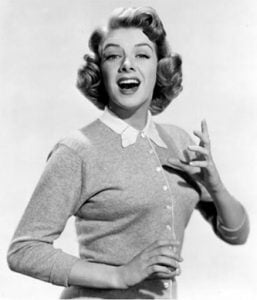 A popular singer and actress throughout the 1950s
A popular singer and actress throughout the 1950s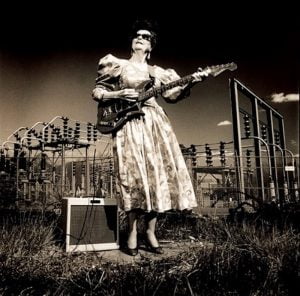 Known for being the first woman to write, produce, and sing her own music
Known for being the first woman to write, produce, and sing her own music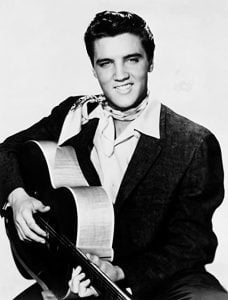 Rock n’Roll’s first real superstar in the 1950’s, Known as “The King”
Rock n’Roll’s first real superstar in the 1950’s, Known as “The King”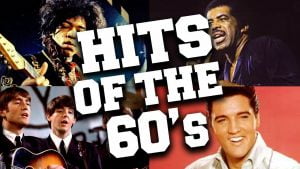 British Invasion
British Invasion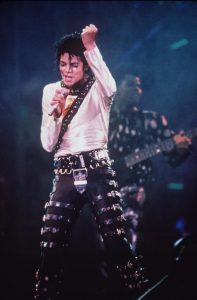
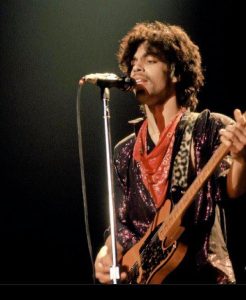 Known for being a music producer, songwriter, and singer in the 1980s.
Known for being a music producer, songwriter, and singer in the 1980s.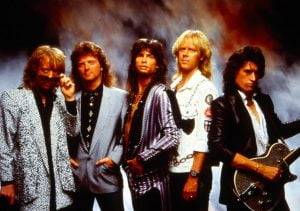 Band members: Steven Tyler, Tom Hamilton, Joey Kramer, Joe Perry, and Brad Whitford.
Band members: Steven Tyler, Tom Hamilton, Joey Kramer, Joe Perry, and Brad Whitford.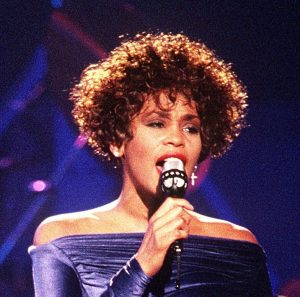 A singer and an actress
A singer and an actress